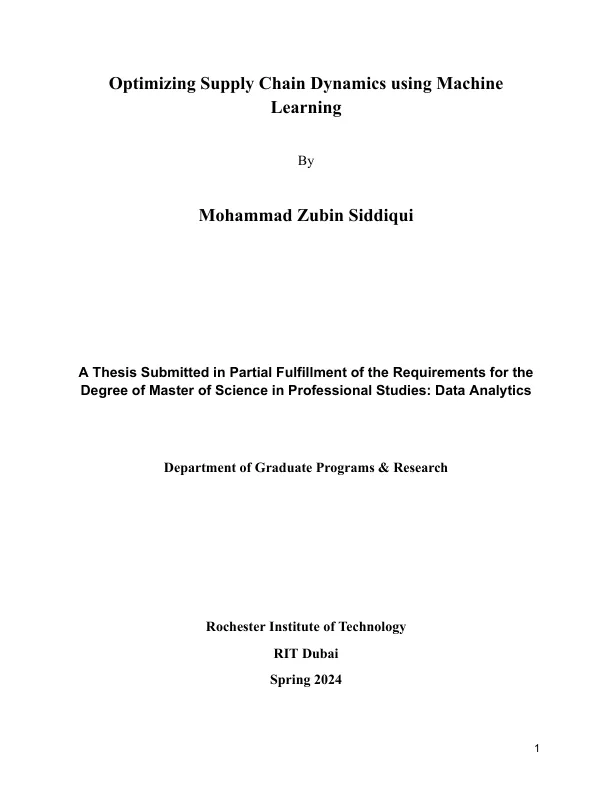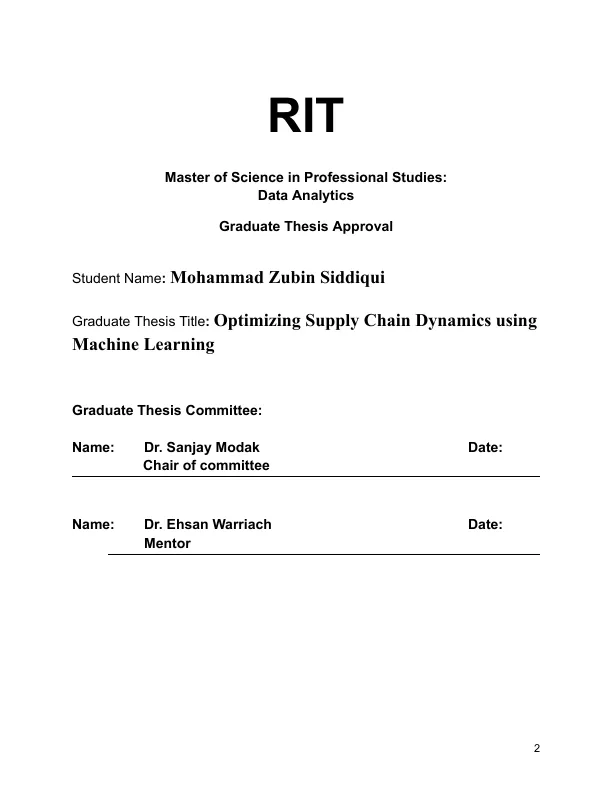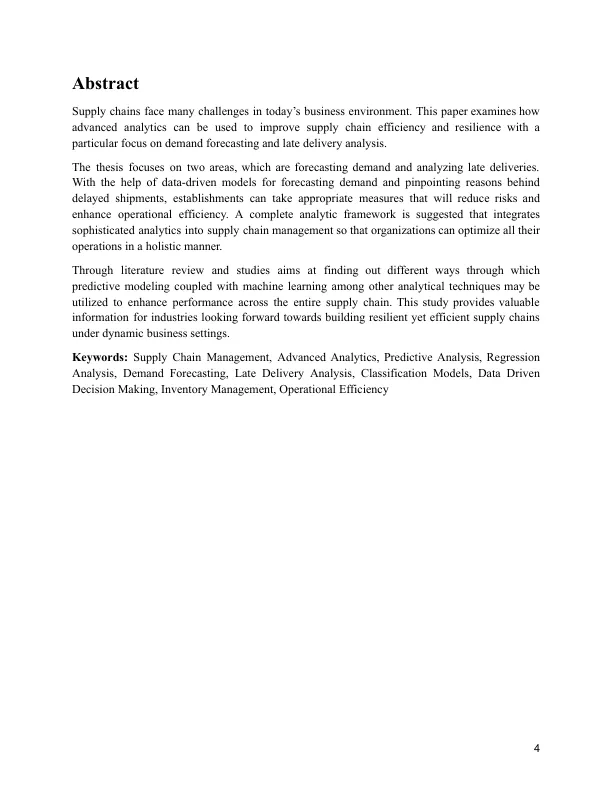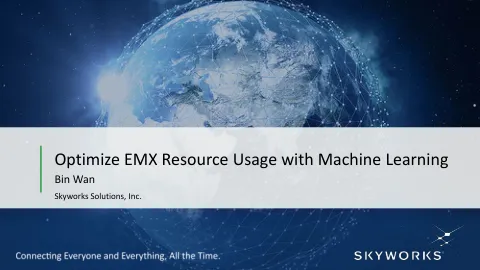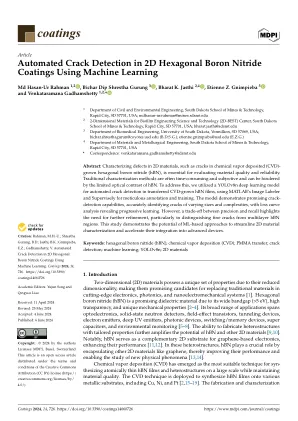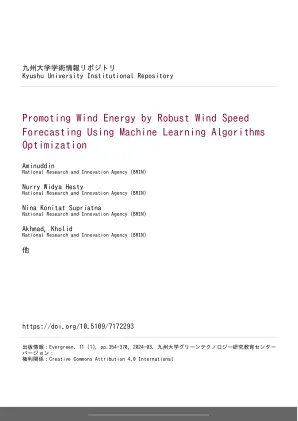CHAPTER 1: Introduction 8 1.1 Introduction 8 1.2 Background Information 8 1.3 Project Goals 9 1.3.1 Research Questions 9 1.4 Research Methodology 9 1.4.1 Demand Prediction 10 1.4.2 Late Delivery Analysis 10 1.5 Limitations of the Study 11 CHAPTER 2: Literature Review 12 2.1 Introduction 12 2.2 Literature Review 12 2.3 Key Takeaways from the Literature Review 25 CHAPTER 3: Project / Data Description 26 CHAPTER 4: Analysis 28 4.1 Data Preprocessing 28 4.2 Feature Engineering 29 4.3 Exploratory Data Analysis 31 4.3.1 Customer Segment Analysis 32 4.3.2 Market Analysis 33 4.3.3 Product Category Analysis 34 4.3.4 Revenue vs Late Delivery 34 4.3.5 Delivery Status 36 4.3.6 Shipping Modes 36 4.3.7 Delivery Status by Shipping Mode 37 4.3.8 Payment Method 38 4.4 Ordinary Least Squares 39 4.4.1 Linear regression utilizing usual least squares (OLS) 39 4.4.2 OLS Regression 39 4.4.3 Linear回归方程43第5章:数据建模46 5.1订单项目数量回归模型46 5.2分类模型 - 延迟交付48第6章:结果52第7章:结论53 7.1供应链问题,如数据集所示53 7.2结论53参考文献55
使用机器学习优化供应链动力学
主要关键词

